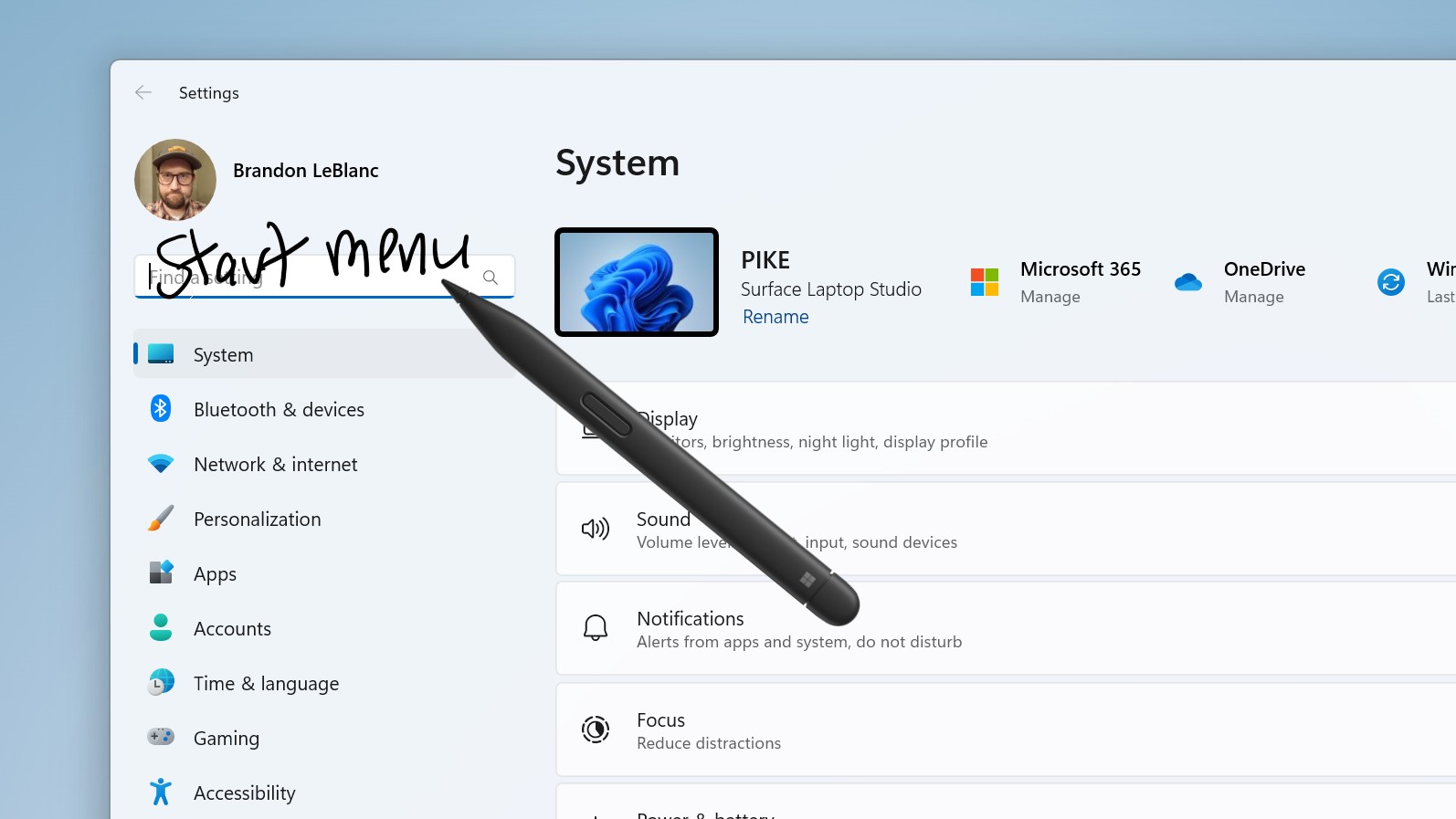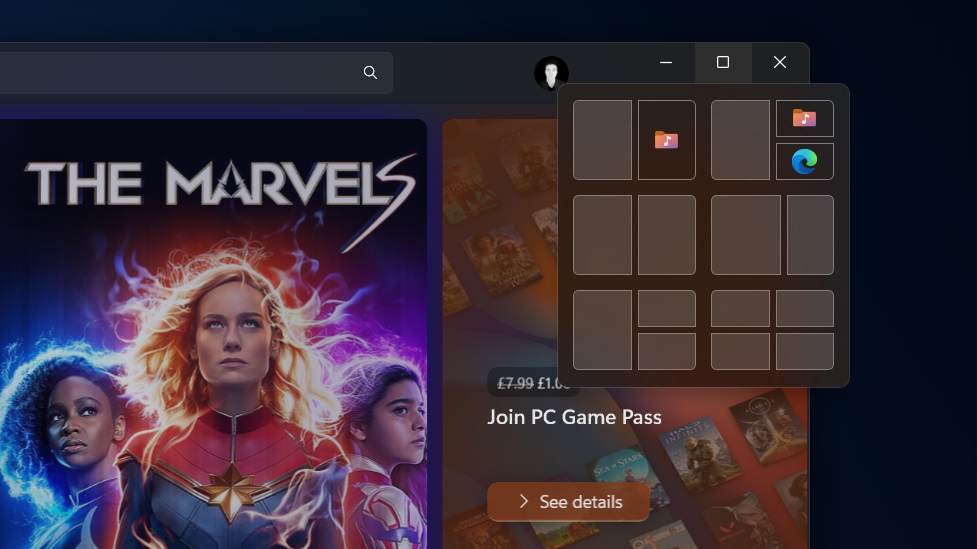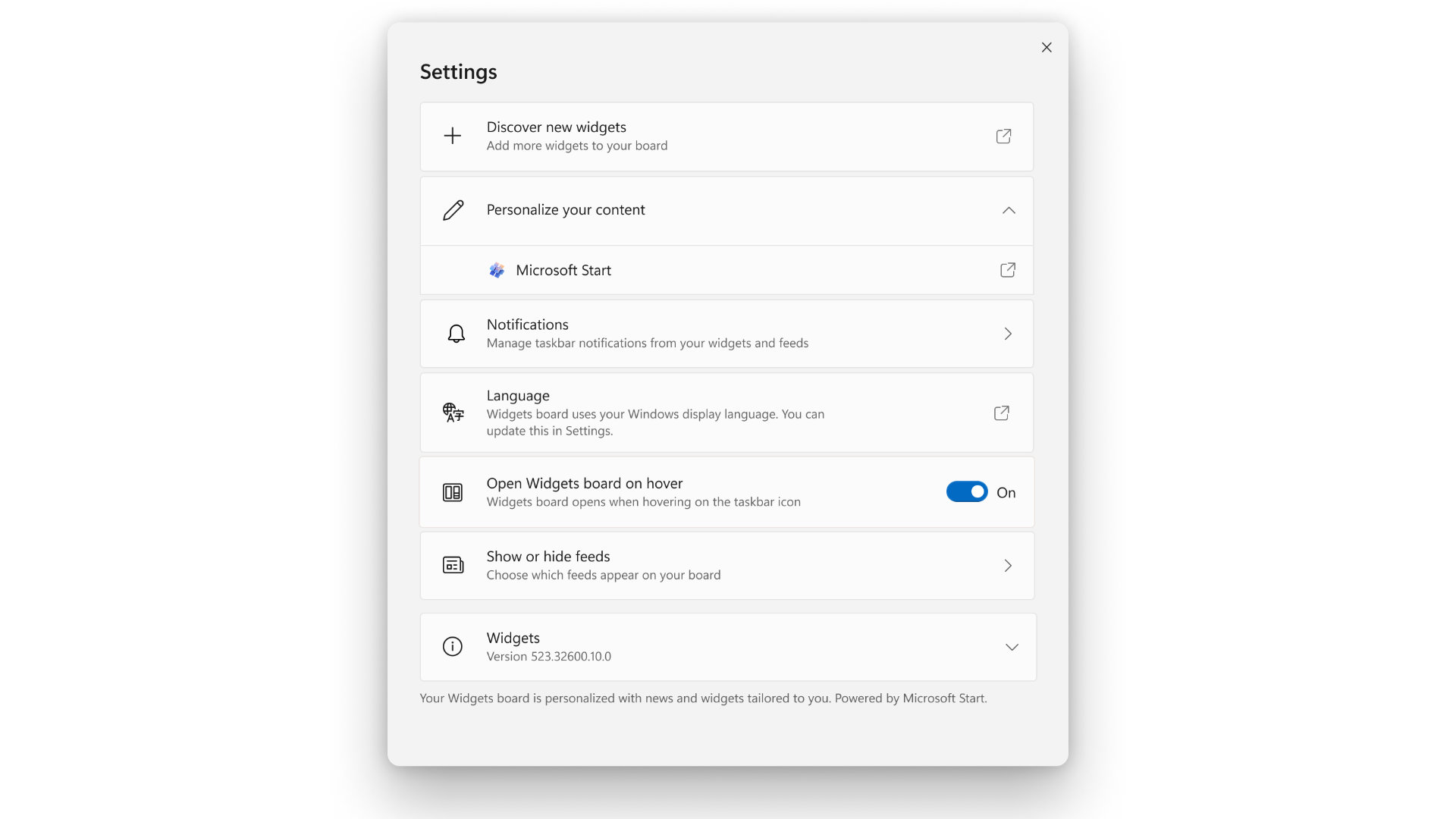Windows 11 'Moment 5' feature update is coming this month — here are the new features
Windows 11's next feature drop will be made available for both 22H2 and 23H2 users. Here's what's new!
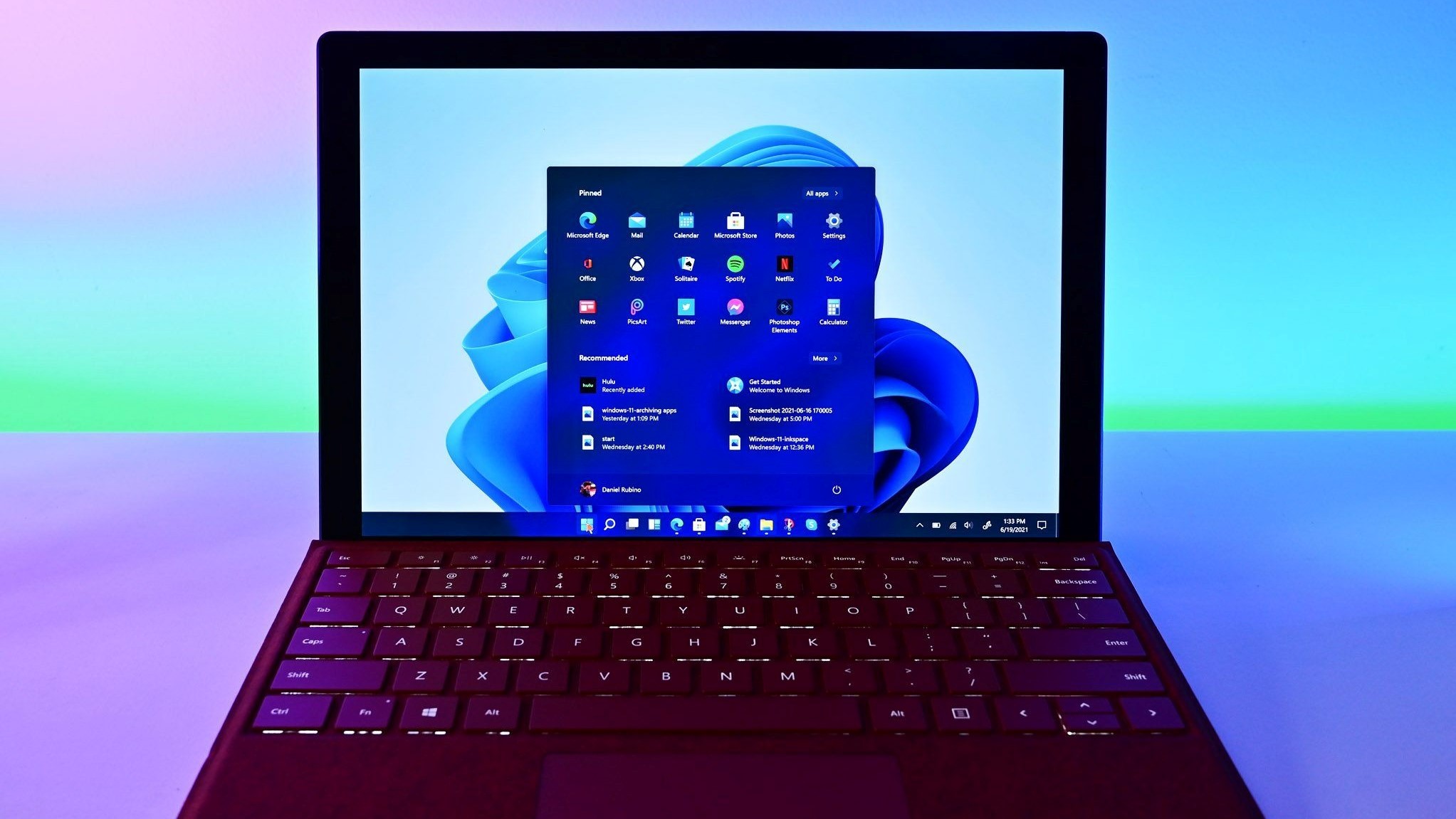
- AI Snap Layouts
- Ink directly into text boxes
- Disable news in Widgets
- Disable Bing in Windows Search (EU only)
- Uninstall Microsoft Edge (EU only)
- Various Copilot changes
- Rename device in Nearby Share
- Notepad updates
- Windows 365 integration improvements
- Accessibility improvements
Microsoft is gearing up to ship the next Windows 11 feature drop later this month, also known as "Moment 5" or the "February 2024 Moment" for Windows 11. This feature drop will a bit smaller in scope compared to previous moment updates, with the primary focus being on delivering necessary changes to the OS to make it compliant with the Digital Markets Act (DMA.)
With that said, there are a number of quality-of-life improvements coming with the Moment 5 update, which we expect will begin rolling out as a preview update later this month. Microsoft is working on upgrades to some of Windows 11's built-in accessibility features, improvements to the Windows 365 cloud PC integration, and the ability to remove news from the Widgets Board, and adding various improvements and changes to Windows Copilot, including moving the Copilot button on the Taskbar.
As always, we will keep this post up to date with any new features that Microsoft adds them to the testing program for the Moment 5 update. As of right now, this is everything we're expecting to see begin shipping in February.
Release date & Availability
According to my sources, the next Windows 11 Moment update is expected to be finalized in early February, with rollout expected to begin a few weeks later. Internally, Microsoft also calls this feature drop the "February 2024 Moment," which implies it will hit general availability sometime in February. In fact, my sources say seekers will be able to grab the update starting February 27.
Just like previous Moment updates, Moment 5 will be delivered as a cumulative update via Windows Update, likely rolled into the March or April 2024 Patch Tuesday release after being made available as an optional preview update in late February. Moment updates are not optional forever, so Windows Update will eventually automatically install the Moment 5 update if you don't manually request it.
Moment 5 will only be offered to users running Windows 11 version 23H2 and version 22H2, so all active Windows 11 users on a supported version of the OS will be getting the Moment 5 feature set. Moment 5 is expected to be the last Moment update for Windows 11 users in 2024, as the next big Windows 11 OS update, version 24H2 launches later in the year.
General updates
The Moment 5 update for Windows 11 brings with it a number of quality of life improvements, such as the ability to ink directly into text boxes across the OS. This is a feature other platforms have had for some time, and now it's finally coming to Windows. This makes using the OS with a digital pen much more streamlined, as you no longer need to enter a dedicated handwriting panel to type things.
All the latest news, reviews, and guides for Windows and Xbox diehards.
As part of the changes being made to the OS to comply with the DMA, Microsoft is also making even more in-box apps uninstallable by the user. These apps include Edge, Cortana, Camera, and Photos. Yes, that means for the first time ever, the Edge browser will be uninstallable if it's something you don't intend to use.
On that same line, Microsoft is also making the Windows Search pane interoperable, which means third-party search providers such as Google or Yahoo can build a plugin for the Windows Search pane to let users switch from Bing to another search provider if they choose. Currently, this capability and the ability to uninstall Microsoft Edge is exclusive to Windows 11 PCs running Moment 5 in the European Economic Area (EEA.)
Elsewhere in the OS, Microsoft is making some changes to the incredibly handy Nearby Share feature, which is essentially AirDrop but for Windows PCs. Nearby Share now has "friendly name" support, which means you can give your PC a more readable name such as "Zac's Laptop" in the Nearby Share menu. This will appear when another PC attempts to share a file with you using Nearby Share. Microsoft also touts transfer speed improvements with the Moment 5 update.
Microsoft also says the Windows Spotlight feature, which pulls in a background of the day from Bing, will be set as the default wallpaper setting starting with the Moment 5 update. This setting will only take effect if you're using one of the built-in Windows wallpapers, if you're using a custom wallpaper the Windows Spotlight option will not be automatically toggled.
Microsoft is also adding AI-powered smart app snap suggestions to the Snap Layouts menu that appears when you hover over the maximize icon in an app. Using machine learning, Windows will remember your most commonly snapped apps, and automatically suggest layouts based on the apps you currently have open.
Lastly, Microsoft is making minor changes to the casting menu in the Quick Settings panel, which will now better describe the feature to new users who haven't used it before. Microsoft will also suggest using the Cast feature whenever the OS detects the user is multitasking by constantly switching between multiple app windows.
Windows Copilot
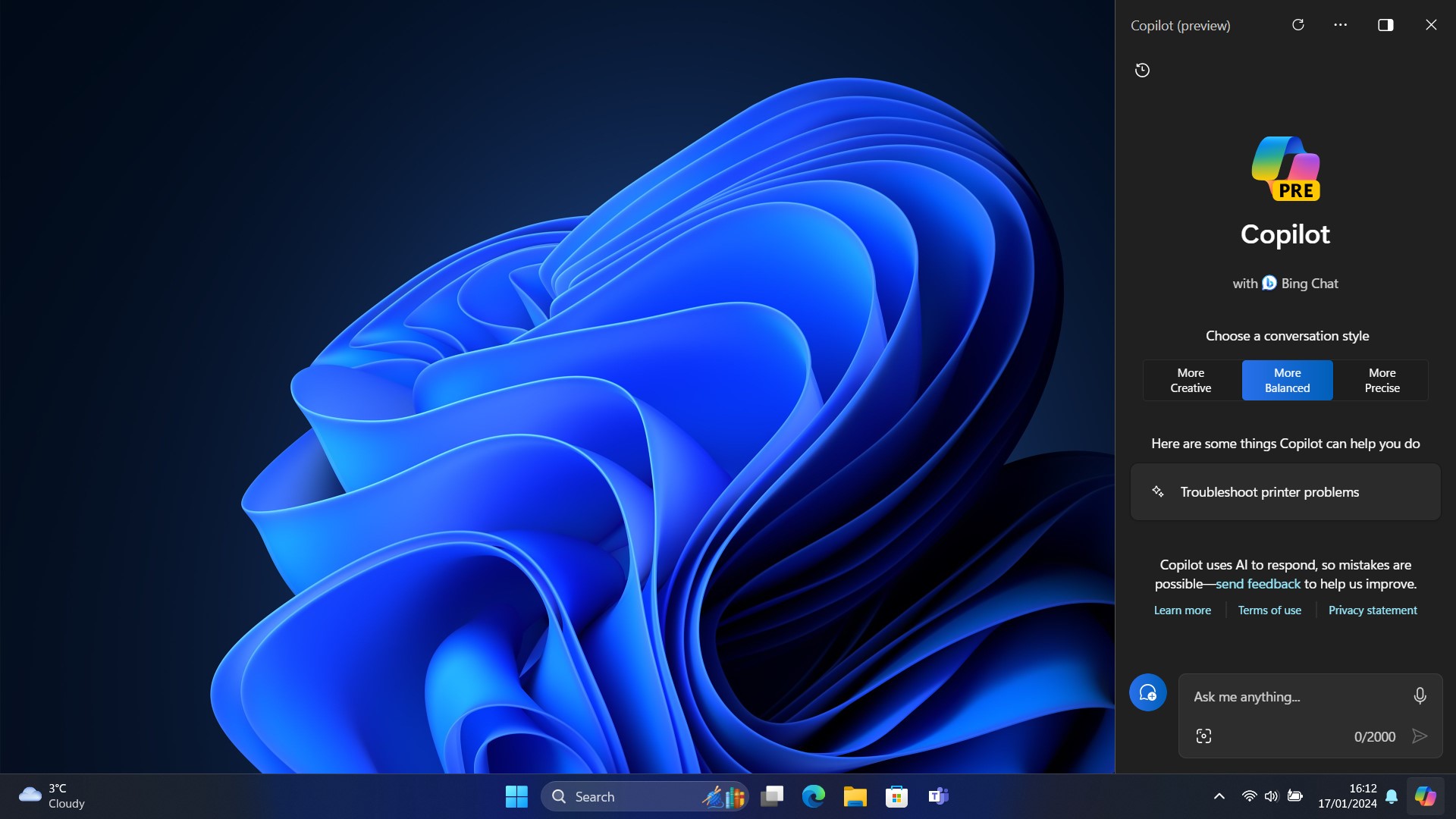
Unsurprisingly, the first Windows 11 feature drop to land post Copilot launch comes with a number of improvements for the feature. Microsoft is moving the Copilot button to the very right of the Taskbar, moving over the date and time button and disabling the show desktop button. Although it's now disabled by default, users can still manually enable the show desktop button if they wish.
Copilot itself can now be "undocked" which will allow apps to exist underneath the Copilot sidebar instead of being forced to appear next to it. The Copilot interface also has a wider layout, and now also shows up in the Windows ALT+TAB menu too, making it quick and easy to switch to using the keyboard shortcut. Copilot now also works across multiple displays, so you can open in wherever your heart desires.
Widgets Board
Microsoft is making several changes to the Widgets Board on Windows 11 to comply with the DMA. The biggest change is the ability to disable Microsoft News integration within the Widgets Board, allowing users to outright turn off the "Microsoft Start" news feed in the Board's settings page.
This means users can choose to use a widgets only layout in the Board for the first time, which is excellent news for those who don't care about the latest headlines being fed to you through the OS.
In addition to being able to disable Microsoft Start, the company is also making the Widgets Board interoperable, which means third-party news services can build a plugin that integrates with the Widgets Board. For example, Google News or Apple News could build support for the Windows Widgets Board, and users would be able to install that plugin if they prefer those services over Microsoft News.
Unlike some of the other DMA changes, this one appears to be universal, meaning you don't need to be in an EEA region to access it.
App updates
There are also more improvements to in-box apps on the way with the Moment 5 update. Starting with Notepad, which now includes a character count along the bottom of the app. An "Edit with Notepad" shortcut now also appears in context menus when right-clicking select file types, which is pretty neat.
Microsoft has also added a new "Mobile device experiences" app that can be accessed in Windows Settings, which lets you link your phone to your PC outside of the Windows Phone Link app. Specifically, it will sync a notification to your PC whenever you take a photo with your phone, offering a quick and easy way of copying that photo to your PC for editing.
The Microsoft Store has also been updated with a new "Arcade" tab, which lets you play instant games that don't need to be downloaded. The games are pretty basic, but they're great for killing a few minutes as you wait for a file to download or render to finish.
The app has also gained some quality of life improvements, such as a richer interface that appears when you hover over an app on the Store home page. The app now also launches faster, so you can get to downloading your favorite apps more quickly.
Windows 365
Microsoft continues to work on integrating Windows 365 into the Windows 11 OS. With Moment 5, Microsoft has taken further steps to polish this experience, such as adding the ability for an organization to customize the login page with their own logo for employees punching in Cloud PC credentials.
There's also a new disconnect button in Task View that will let users disconnect from their Cloud PC when using the local Windows 11 desktop. Within the Cloud PC, there is now also a disconnect button directly in the Start menu, which will switch you back to your local desktop.
Task View now also has indicators that will pop up just above the Taskbar whenever you switch between your local desktops or Cloud PC. Plus, users can now more easily configure local device settings when connected to a Cloud PC, with a dedicated button for opening the local Windows Settings app within the Cloud PC Windows Settings app.
Lastly, Microsoft is launching a new mode for Windows 365 Boot called Dedicated Mode, which can now boot to your Windows 365 Cloud PC from your designated company-owned device. You will be able to seamlessly log in to your Windows 365 Cloud PC from the Windows 11 login screen using password-less authentication methods like Windows Hello for Business. This mode also comes with fast account switcher experience to effortlessly switch profiles to log in with, personalized experience with your username and password, display picture on lock and login screen, remember your username, and more.
Accessibility
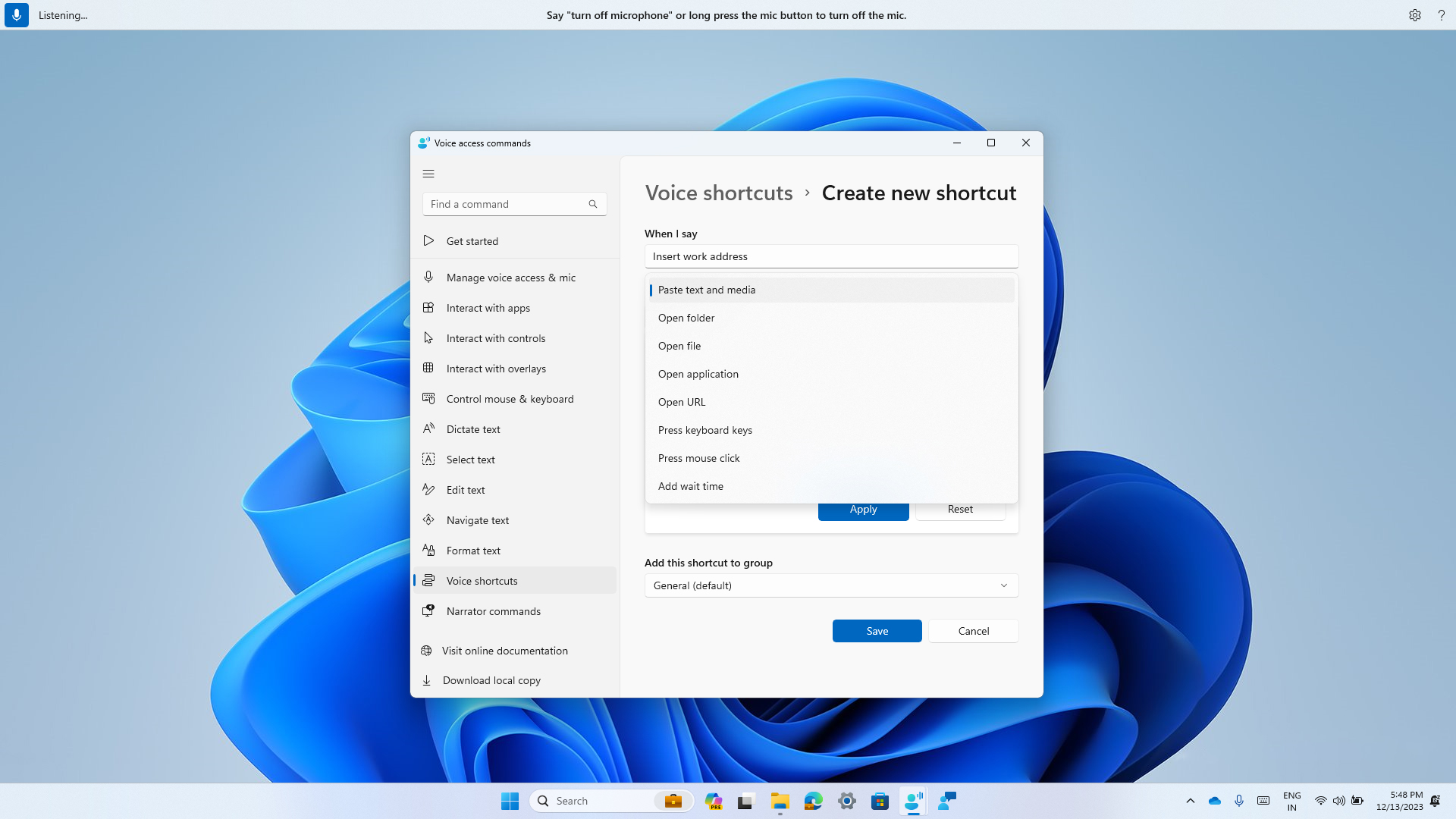
Last up, Microsoft is making more improvements to some of the accessibility features built-in to Windows 11. To begin, Voice Access now supports multiple monitors, which means you will be able to navigate the OS using your voice across more than just your main display now. Additionally, Microsoft is adding support for more languages, which are French (France), French (Canada), German, Spanish (Spain) and Spanish (Mexico.)
Voice Access is also gaining a new feature called "voice shortcuts," which lets you create custom commands that use your voice to activate. Just shout "what can I say" when voice access is enabled, and select the "voice shortcuts" tab in the window that pops up. From there, you can create an action based on a custom phrase, and pick from a selection of actions provided by the voice access app.
So for example, I could set up a voice shortcut that opens a specific file, and give that shortcut the command "open my favorite file." Voice Access will then open the file that you specified every time you say those words. Pretty neat!
Narrator is also gaining some updates, including the ability to preview new natural voices before you download them. Narrator can now also use voice access to open applications, dictate text, and interact with elements on screen using voice. Commands such as "speak faster" and "read next line" work now in conjunction with voice access.


